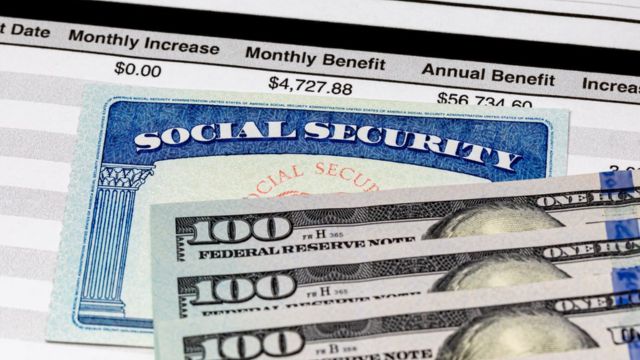Maximizing your Social Security benefits to achieve the program’s maximum monthly payment of $5,108 in 2025 requires careful planning, specific career milestones, and strategic timing. Here’s what you need to know about qualifying for this significant benefit and the factors that play into it.
How Social Security Benefits Are Calculated
Your monthly Social Security benefit is based on three key factors:
- Earnings History: The Social Security Administration (SSA) calculates your benefits using your 35 highest-earning years, adjusted for wage inflation. Only income up to the maximum taxable earnings limit for each year counts.
- Retirement Age: Your full retirement age (FRA) depends on your birth year. For those born in 1960 or later, FRA is 67. Claiming benefits earlier reduces your monthly amount, while delaying until age 70 increases it.
- Claiming Strategy: Delaying benefits past FRA boosts payments by about 8% per year until age 70, ensuring the highest possible monthly check.
Earnings Requirements
To qualify for the maximum benefit of $5,108 in 2025, you must:
- Consistently Earn the Maximum Taxable Income: For 2025, the taxable earnings cap is $176,100. This requires reaching or exceeding the maximum taxable earnings limit for at least 35 years.
- Delay Claiming Until Age 70: Individuals turning 70 in 2025 (born in 1955) must wait until their 70th birthday to maximize delayed retirement credits.
Why This Is Out of Reach for Most
The combination of earning the maximum taxable income for 35 years and delaying benefits until age 70 eliminates the majority of Americans from receiving the top payout.
Only about 6% of workers consistently earn at or above the maximum taxable earnings threshold, making it an exclusive group.
2025 Social Security Changes
- Higher Maximum Benefits: The maximum benefit at age 70 will increase from $4,873 in 2024 to $5,108 in 2025. For earlier claiming ages, such as 62 or 67, the amounts are significantly lower at $2,831 and $4,043, respectively.
- Earnings Limit Increase: The earnings test limit (for those claiming benefits before FRA while still working) will rise, allowing more flexibility for working retirees.
Optimizing Your Benefits
Even if the maximum isn’t realistic for you, there are strategies to increase your benefit:
- Work Longer: If you have fewer than 35 years of earnings, working additional years can replace lower-earning years in the calculation.
- Delay Retirement: Holding off on claiming benefits beyond FRA provides a steady increase in your monthly check.
- Maximize Spousal Benefits: Married couples can explore spousal or survivor benefits to enhance household income.
- Stay Informed About Policy Changes: With Social Security facing long-term funding challenges, future reforms could impact retirement age or benefit formulas.
Consider Your Financial Needs
While the $5,108 monthly benefit is appealing, it may not align with your financial or health circumstances. Many retirees find a balanced approach—claiming benefits earlier or working part-time—more suitable for their lifestyle.
Evaluate how Social Security fits into your overall retirement plan and consult with a financial advisor to explore your options.
Conclusion
Qualifying for the top Social Security payment requires a perfect storm of high earnings, strategic planning, and delayed claiming. While only a small fraction of retirees will meet these conditions, understanding the system can help you maximize your benefit. Whether you aim for the maximum or a tailored strategy, staying informed is key to securing financial stability in retirement.




